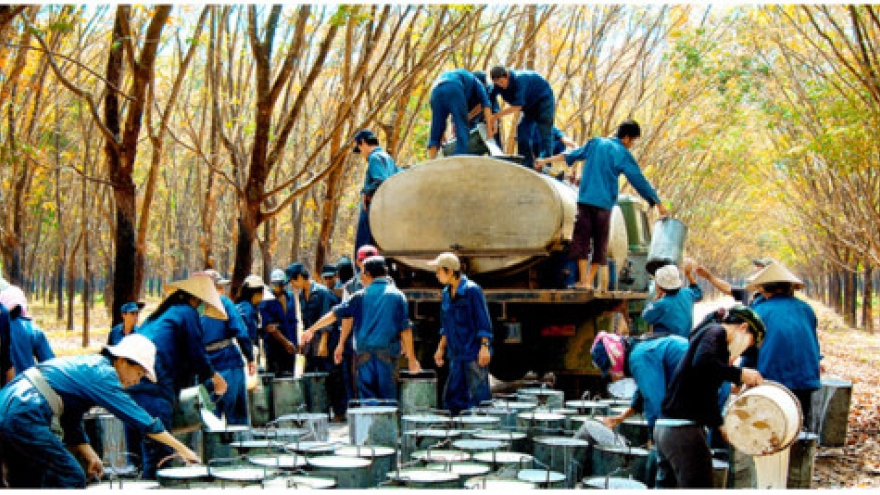Rubber producers seek to avoid damage from US-China trade war
Rubber producers must develop specific risk management strategies, which cover market risks and product legality, in order to avoid getting hurt by the current US-China trade tensions, according to To Xuan Phuc, a senior policy analyst from Forest Trends.
 |
| Rubber producers must develop specific risk management strategies in context of US-China trade tensions. |
The escalating trade war between the US and China will certainly have direct impacts on Vietnam’s rubber industry, Phuc said. Most Chinese rubber imports from Vietnam go into tire manufacturing and the rubber demand from China is likely to be disrupted by the raised tariffs that the US has imposed on automobile parts made in the East Asian country, he explained.
Furthermore, studies have shown that by 2030, the global prices of natural rubber may not recover to the levels of 2011.
He recommended that rubber producers plan ahead to effectively restructure the supply chain, shift production from raw to high-value processed products, and seek more buyers on the domestic market.
Tran Thi Thuy Hoa, head of the Advisory Committee for Rubber under the Vietnam Rubber Association (VRA), said that in order to promote the industry’s reputation, the VRA and the Vietnam Rubber Group have jointly implemented a project for Vietnamese rubber branding with the registration of a “Vietnamese rubber” trademark in international markets like China and India.
The Ministry of Agriculture and Rural Development warned Vietnamese rubber exporters that they will probably face a rougher ride ahead as a consequence of declining demand from key markets. So they must be more active in finding new partners to reduce dependence on traditional markets, the ministry added.
Vietnam is the world’s third largest rubber producer with approximately 970,000ha of rubber farms and a total output of 1.1 million tonnes last year. In the first three quarters of 2018, the country exported 1.06 million tonnes of rubber for US$1.45 billion, up 19.9% and down 10%, respectively, from the previous year.
The country’s three main rubber products included natural rubber, processed rubber, and rubber wood. In 2017, Vietnam shipped US$6.4 billion worth of these products abroad, contributing to 5.4% of total national exports.



